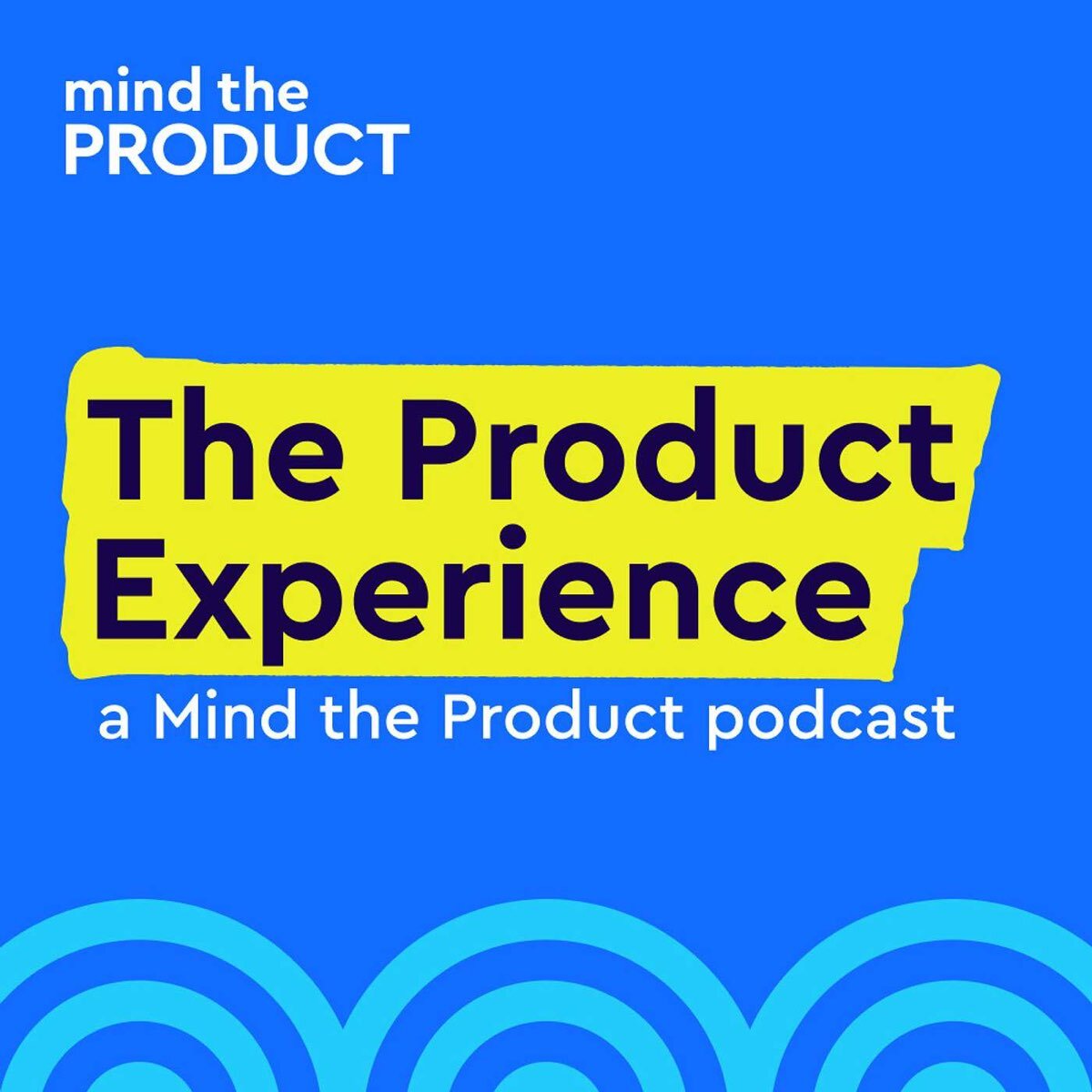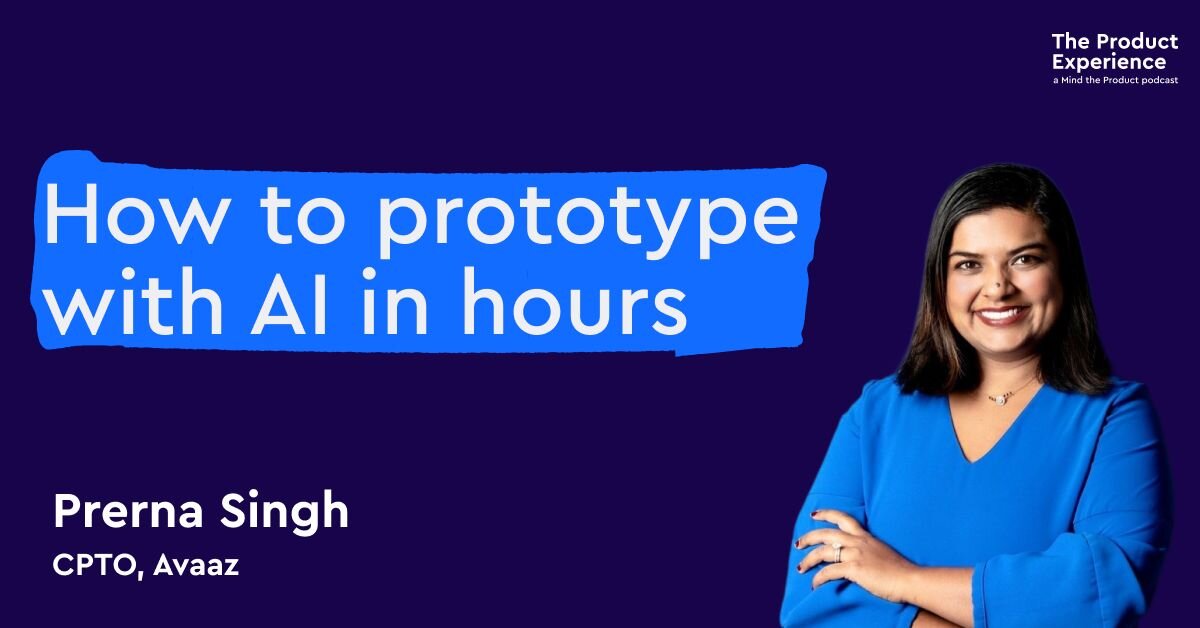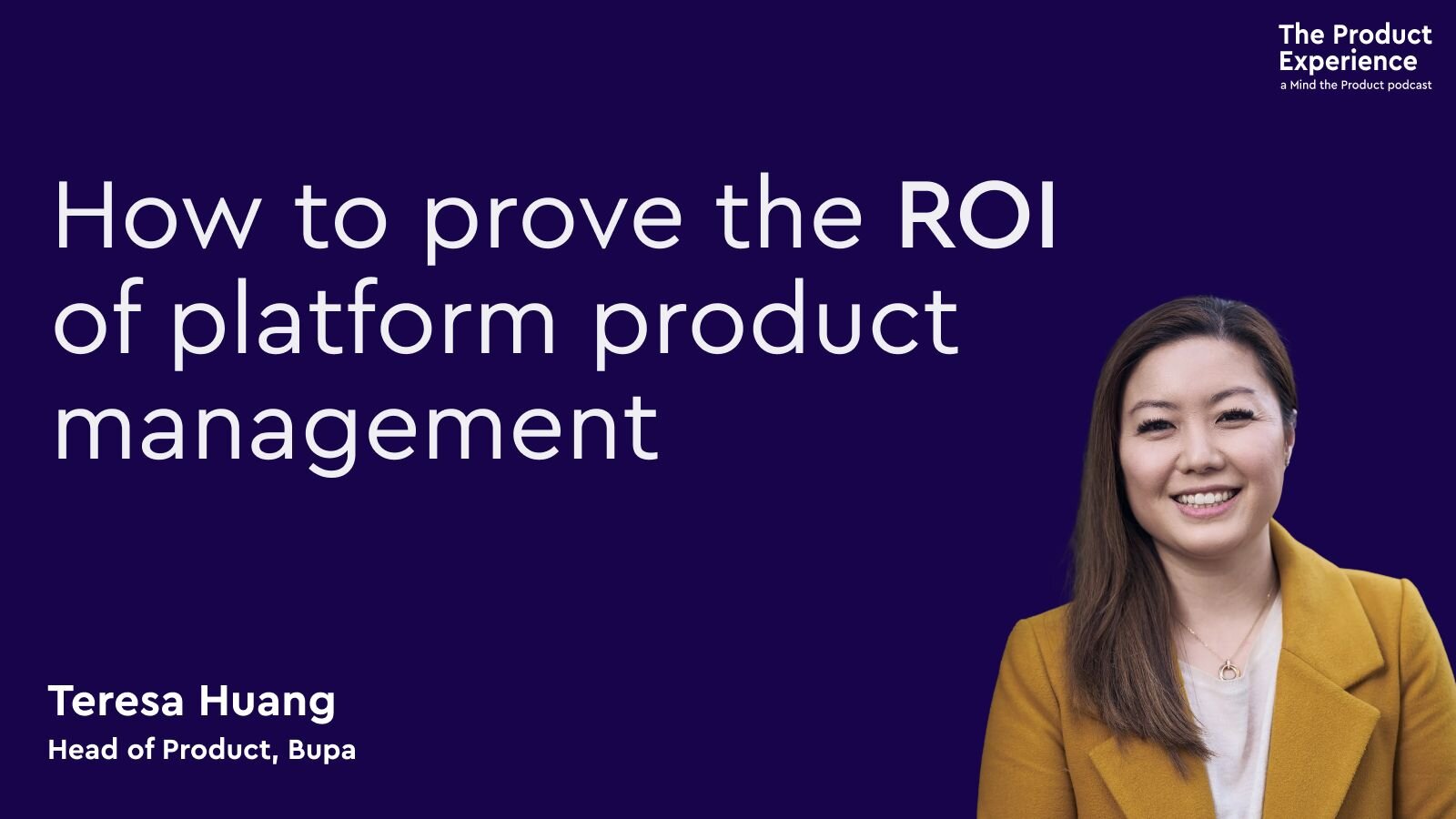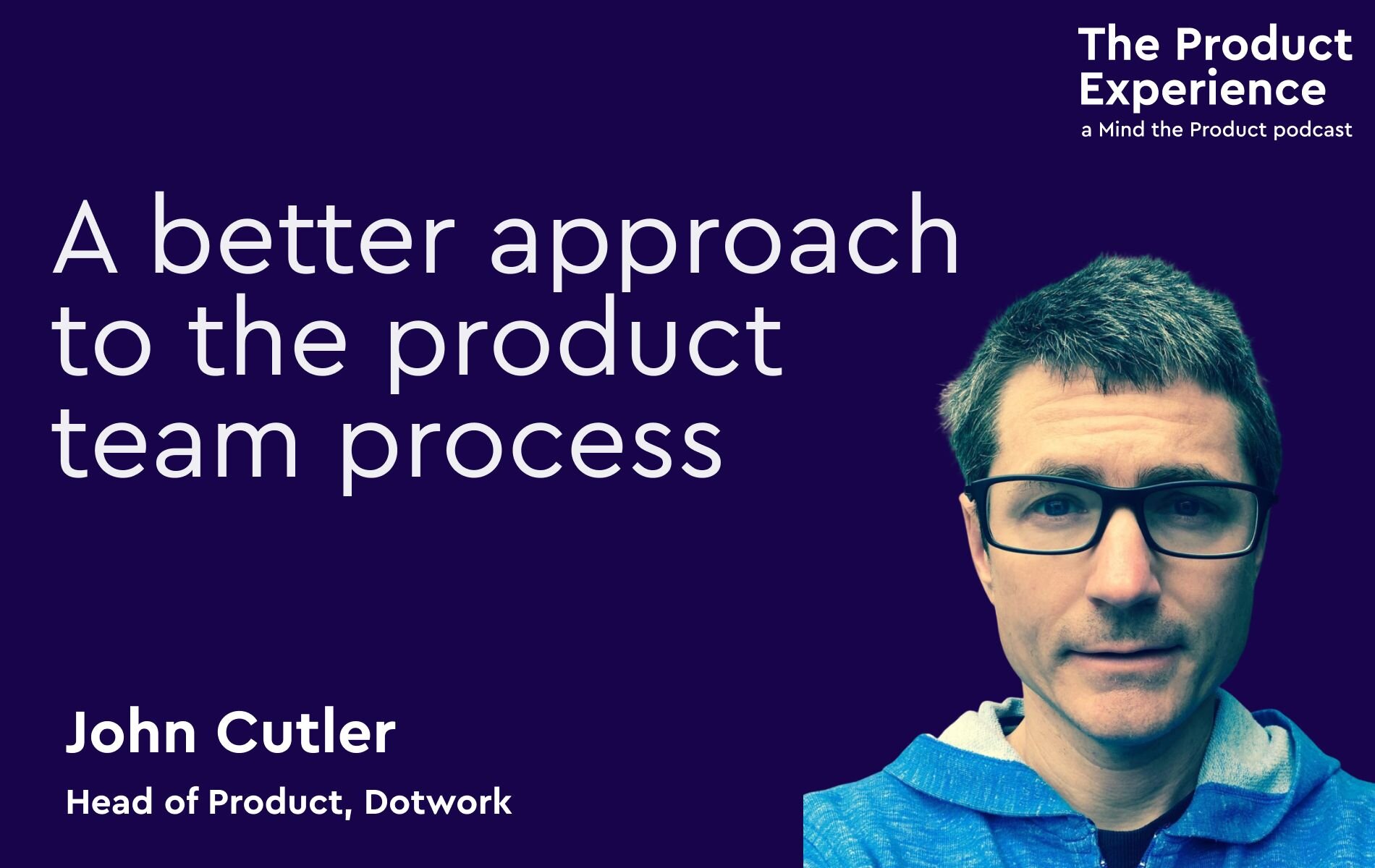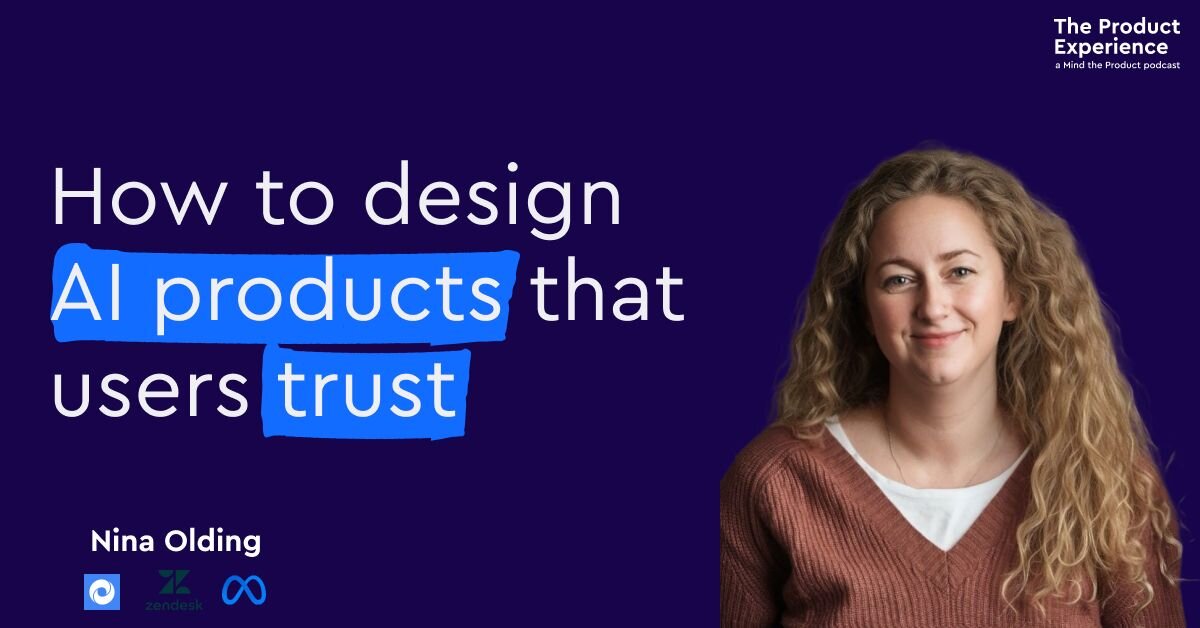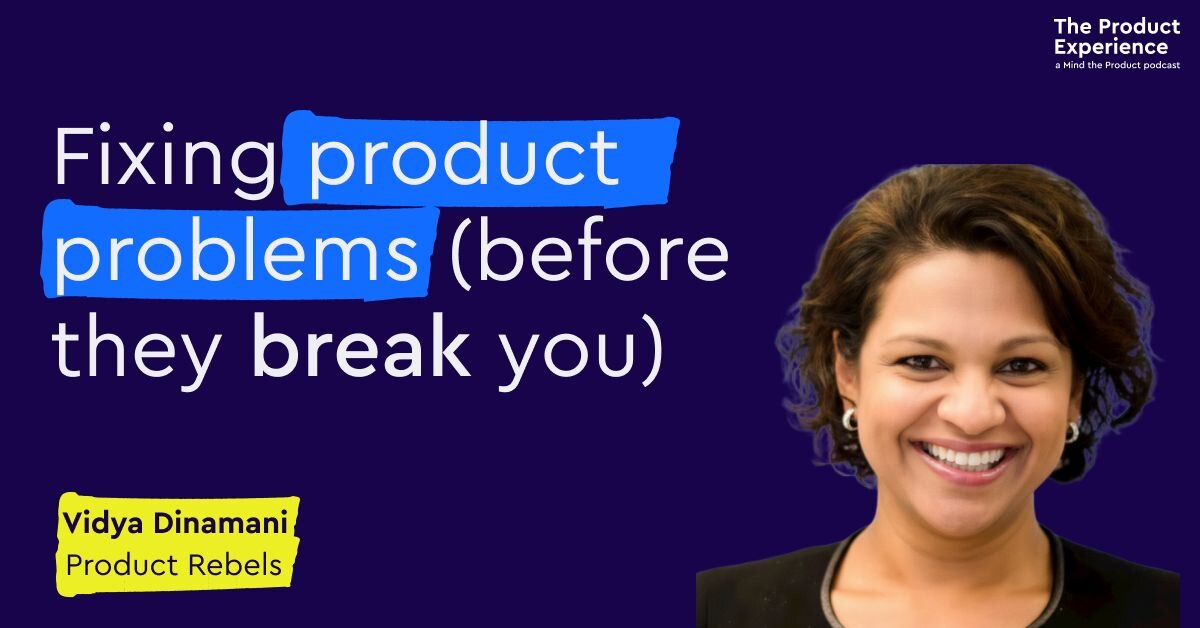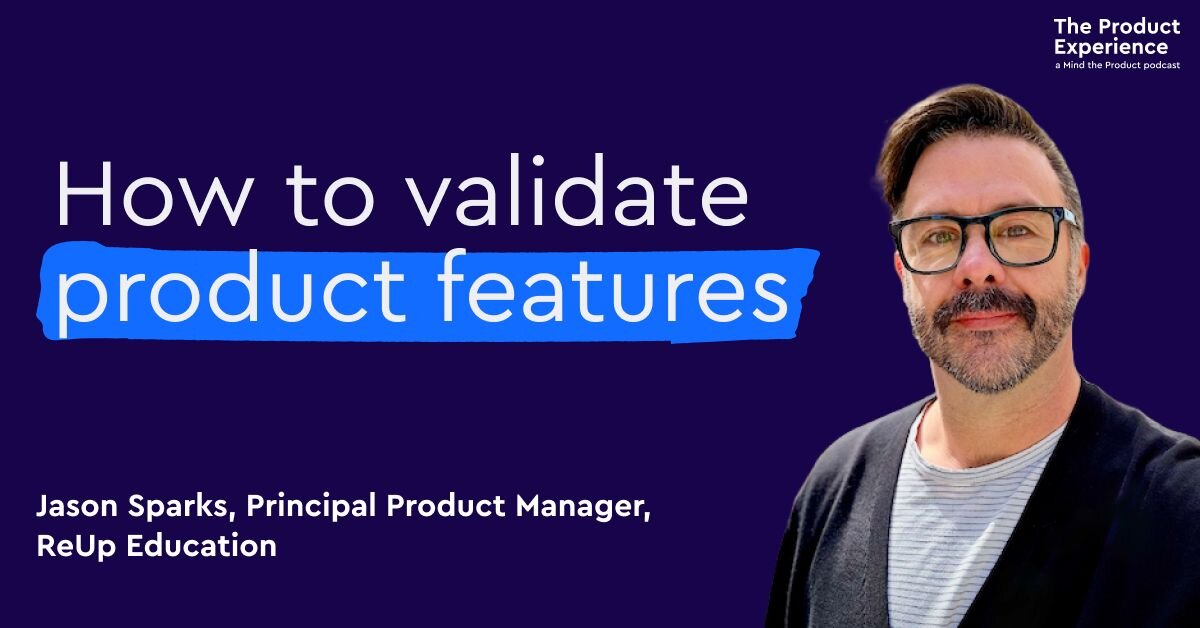Featured Links: Follow Randeep on LinkedIn | NHS COVID-19 app | Gov.UK NHS Covid-19 App Privacy Notice | Understanding the Impact of Covid-19 on BAME Groups NHS Data Report
#mtpcon London 2023 is set to be an inspiring event. The speaker line-up is shaping up nicely and tickets are selling fast. Join us for our smash-hit conference on 20 October. Hurry and get your ticket today.
Episode transcript
Randy Silver:
Hey everyone, it's Randy again. It's two weeks in a row that I'm flying solo for the pod intro, but don't worry, Lily is here this week for the interview. It's been a crazy couple weeks for us both. Lily went free diving and is absolutely crushing it in her CPO role at BBC Maestro, but she's not going anywhere as far as the pod is concerned. I'm not letting her go anywhere. But I have big news as well. I'm going to be speaking at Mind of Products London Conference this year on stage at the Barbican on the 20th of October. This is the stage that everyone's silly enough to enjoy public speaking in our field dreams of doing, and I'm cooking up something special for it. But this week we're revisiting a chat we had with someone else who was speaking this year, Randy Psydu. We talked to Randy about his experience working on the COVID app from the NHS, the UK's National Health Service. As someone who is a user of the app, it's an absolute miracle that it worked as well as it did, and the stories behind getting there are just brilliant. But enough from me, let's get on with the show. The product experience is brought to you by Mind the Product. Every week on the podcast we talk to the best product people from around the globe.
Lily Smith :
Visit mindtheproductcom to catch up on past episodes and discover loads of free resources to help you with your product practice. You can also find more information about Mind the Product's conferences and their great training opportunities happening around the world, and online.
Randy Silver:
Create a free account on the website for a fully personalized experience and to get access to the full library of awesome content and the weekly curated newsletter Mind. The Product also offers free product tank meetups in more than 200 cities. There's probably one near you.
Lily Smith :
Randy, welcome to the product experience. It's really great to be chatting to you tonight.
Randeep Sidhu:
Thanks so much for your time.
Lily Smith :
So before we kick off with our topic for the evening, it'd be really great if you gave us your origin story and kind of how you got into product.
Randeep Sidhu:
Yeah. So it's a bit, as most people, very non-standard. I studied evolutionary biology Like it's completely relevant for most things and I started the world in kind of the NGO space because I kind of was lucky enough and I worked hard enough to get to Cambridge and thought education was important. So I did teach first, helped set this charity up and then kind of got into consulting like innovation, product innovation, kind of just got a science degree and then I became really good at user behavior, user insight, and then just kind of fell into my first product role in gaming and then just grew from there. So then I spent the last what six, seven years in health tech. So yeah, it's non-standard, but it's all about human insight, which is what the best products are, I'd say.
Lily Smith :
Awesome, and you ended up leading the development from the product point of you for the Test and Trace app in the UK. So tell us a little bit about how you ended up being the lead on that project.
Randeep Sidhu:
Yeah, so actually I think it's quite pertinent because it's pretty much, I think, almost exactly a year ago today when I was just called up out of the blue. So I have been working in health tech for quite a while and I was at that point at a company called Babylon Health, which is in the UK and America, and I was leading a lot of their products globally as well as building health tech in parts of the world like Rwanda, and I got called up out of the blue by someone saying well, you know, the NHS are looking for someone to help them. And at that point they pitched it like they just need a bit of advice. And for those kind of non-UK listeners, in July last year or to end of June last year, the government had spent three months. The National Health Service, the NHS, had spent three months building a COVID app and it's very similar to the ones globally. But that COVID app was to detect if you've been exposed to someone who had COVID and to notify you. That app kind of never launched and is quite catastrophic failure. So in my head I thought, oh okay, they just want a bit of advice or someone who works in health tech to give them some thoughts. Unbeknownst to me. They were kind of sniffing me out and then I think I spoke to them over the weekend. They called me up two days later and said we really need you, national Emergency. That was Tuesday night. Wednesday morning I spoke to my employer and said like there's some urgent need for me to try and do this thing. Lots of people at that time will say don't do it, it's going to be career suicide. Like, why would you do this? It's failed once it's in government. Like it's not going to work. Covid is too unpredictable. But I think at that point the risk I thought was there was a bigger risk to people in those underrepresented communities, like brown and black people were dying at a horrible rate. So I thought I have to do this and so I took the chance and actually left on a temporary leave from Babylon three days after. So I spoke to them Wednesday morning, left Friday night, started a test and trace immediately and that was 11 months of my life. So, yeah, it was extreme.
Randy Silver:
It was very extreme. So, before we go into any of the specifics of it, I'm curious. You get this call. You have a perception of what government work might be like, as you said. Everyone told you don't do it. It's already failed once. What was that perception? And you know, was it different when you actually went there.
Randeep Sidhu:
So I suppose actually, I mean, I have a perception. I suppose I'd ask you.
Randy Silver:
What would you think, what's your perception of?
Randeep Sidhu:
a government. I suppose it's probably a good question. What do you think?
Lily Smith :
Yeah, behind the times, kind of stuffy, lots of red tape, waterfall, all those things, although actually I kind of saying this slightly tongue-in-cheek because I know our Government digital services team are amazing and I've done some work with them, so I'm not gonna answer this one.
Randeep Sidhu:
I would say it is the best and the worst of what you've described. So they are some genuinely truly amazing people. And let's not forget, government salaries are not high, so anybody who does product or tech could be earning multiples of those salaries outside of government. So we should always remember that they are key workers, in the same way as many other people are. Like we kind of forget that. We're like oh then you know they're this, that's actually some people took a life choice to do this and actually which I maybe wouldn't have done. So you know they are some amazing people. The challenges are, as you go, more senior, because people are quite tenured and have lived and worked there for quite a long time, whereas in our worlds often people move a year or two years. You know it's quite a morphous and quite Fluid. That's not always the case in government. So there are some people who are, as you get more and more senior, you get more and more people who have less experience. That kind of parts of technology. The other challenges it's like I think someone described Americans around here's a nation divided by a common language, and that's sort of. You know, the same words mean different things in America, in the UK, and I think that's often the case in government, where they use the words of scrum, agile, product, but they mean very, very different things, and so there was a little bit of education to make sure people Use the terms in the way that maybe I and the rest of the team would understand. But the biggest challenge is, like many large organizations that some of the listeners will be part of, is it's kind of an amorphous blob and everyone's got a point of view, and Whereas in some companies you get the CEO says no or the head of product can say no, we had to establish that process in government because there's this really tedious thing where someone goes my minister needs this, that's like I Don't care what your minister needs, because your minister doesn't understand what we're trying to do. So there was a problem before success and then, when the app got successful, there's a different problem, but they've one trying to change it for their own purposes, like transport, immigration, you know. So it's just about kind of making sure you focus on what the product is doing and ignore all the noise, which is all product managers have to do anyway.
Randy Silver:
Hmm.
Lily Smith :
So you were conscripted into this role To try and salvage the test and trace app. There'd been another Version of the app that that had failed for whatever reason. So, like what did you walk into? One on day, one, like where did you start? How, how did you approach your first?
Randeep Sidhu:
Oh, my god, I walked in. I should mention at this point, I'll mention what the cove it up is for people who aren't necessarily sure of it. So the first app, like some other apps like India and I think France, was built with as an engineering project to see can we use Apple and Google phones or kind of Android and I've I was phones to Work out if you're exposed to someone who tested positive for COVID and how long you were close to them for, and so they were trying to do it, which basically meant your phone, even when it was asleep, will be broadcasting and receiving signals. Now the problem with that is phones Particularly, you know, especially with battery saving technology and other stuff, they just switch themselves off. They switch off Bluetooth. If the phone doesn't think it needs to be on, it won't be on, and so the efficiency of this program that was being built was really really Poor. So it was great to engineering but it didn't work efficiently. So I came in and that code that was built Wasn't deployed and it was also tested in a really limited way. So it's great technology, great engineering, but essentially all of that team got disbanded. So I came in to kind of scorched earth. It was originally built in a department called NHS X, who are one division of government. It got moved into a completely separate division of government so I joined that division still part of the NHS and the Department of Health. So I had no product people because it turns out, actually just before they tried hiring someone junior so I was a director, which is quite senior why you found out six months in is they actually hired someone who lasted five days and left. So because I walked in, I was like why is it no one here? I'm just, it's just me, but you can't.
Lily Smith :
But where?
Randeep Sidhu:
is everyone and I didn't realize that someone actually tried bringing something. They didn't dare tell me that they. This lady started on a Monday left by Friday and I turned up on Monday and everyone's like don't let him leave, don't let him leave. So I kind of came in with no Historical code, really, and no product definition of what it was they were trying to do. So that's why I had to do so, my job to be done. Number one was what's the product for and and what's the strategy to get it built. So I can simply that's what I tried doing.
Randy Silver:
We in something so big and you know an international pandemic and crisis, that definition could have been as expansive as anything. You don't want to fail fast in this. You do want to iterate, but your MVP has to actually work. So where did you start? How did you define success and then create A definition of something that was good enough but not so ambitious that you weren't going to get there quickly?
Randeep Sidhu:
So there was. The first thing was, I mean, what the product was trying to is actually really basic. It was trying to stop COVID, which I found is a huge problem. So it's trying to reduce the art. How do you do that? So I looked at the lessons of what maybe didn't work in the first app. The first app didn't necessarily have Clarity of its purpose. It was good, but it was a bit of a scientific project. Can you measure this with an app Be of a engineering process? It was centralized data. There's lots of things which didn't work for the general public. So you know, a centralized database tracking where you are would not work for many, many people. So what we focused on is what is it this app should do? So it should stop COVID. How do we stop COVID? And what we ended up thinking about was the product itself can be engineered, and we ended up using a Google and Apple piece of technology, an API that they built. So we were using that to do the broadcasting and listening. But what is it that would make it work? And that's where psychology came in, because what is it that people wanted at that point? So let's put your mind back to July last year. Literally no one knew what was going on. Covid was completely unpredictable. It was scary. So we needed to think about the psychology of the reassurance that public wanted. Like when you're in a pandemic, people want to feel like they can take action, they want to do something. So we thought what's the psychology of what people need here? So they need to be able to use the app. But to use the app has some functional Basis. It needs to do something. So beyond just pinging you when you get exposed. So we thought about can we have a check-in feature we could see, you know, without us having to test and learn? Lots of third party kind of Testing and checking in systems have been built. I thought, well, if we build one ourselves, similar to what we're like to New Zealand? Really well, that would give a user an ability to do something active to protect themselves. So we basically quickly defined six features three that helped me Selfishly as an individual, because if I helped myself I would use the app. And those three kind of features you know were Notifying if you've been exposed, the basic function of the app, letting you check in somewhere so if there's an outbreak in that venue you'll get alerted, and telling you about the local area risk in your postcode region, but as well, things that I knew a more public benefits like booking a test, symptom checking you know stuff which actually you might need if you're exposed and a countdown timer. People didn't know how long they should isolate for.
Lily Smith :
So by focusing on those two areas, we thought we need to appeal to selfish needs and protection and then so that's kind of we thought about the features and we started testing and that with users to see if they wanted it and I guess one of the things that you Definitely didn't have was the luxury of time, and so how did you ensure that you were kind of moving at speed, especially when you were having to set up a team as well, as you know, basically start from scratch?
Randy Silver:
Yeah, let's look. If you don't mind, let's start with the, with the team specifically. You said you walked in and you were there alone. How did you get back going?
Randeep Sidhu:
So the two things about team is we needed a team and we did a structure for the team to be successful. So, as we spoke earlier about government, I mean the team I I basically stole people. I looked across because I got so some I would not have found people there were. There were lots of consultants and people in test and trace and I found a few key allies and grew from there and so that's and I honestly, hand on heart, had an amazing team with a family, and so we managed to get the first person in explain the mission of what we were Trying to do, which was, you know, stop COVID. Look at being inclusive in doing that, because actually there's something I learned when I used to be a teacher, which is a lesson that works for a low ability child is just a good lesson. So if you build an app that works for the bottom of the pyramid, it is just a good app. I said that vision of not just building an app but making sure it helps those who are most impacted by COVID, like COVID's got me. I think if you're in least in the UK, if you're poor, on the bottom quartile, you've got twice the death rate of COVID if you're BME, black, asian minority ethnic You've got twice the death rate. If you're black, it's four times the death rate. Covid itself isn't a disease of inequality. Society made this become a disease of inequality. So when I started explaining that to people, we got a lot of people who were really passionate about trying to not just stop COVID but fix that mission of trying to do it in the right way. So actually I picked two people, they then recruited others and we kind of went through a vetting process. But, ended up with 10 product managers non-standard, like different bits of project and delivery but we changed the process of how. How we built a product in government so we kind of had product first of, because in government they didn't fully understand how product works. So we were saying, like you know, I would help to find what we build and the kind of foot soldier product managers would kind of define the requirements underneath and it then went to a dev agency to build and then other bits of government like policy Probe assurance that this product is a medical app, so it needed medical assurance. We just kind of built a funnel where I was the beginning and I just kept pushing things through. So we had a team High quickly from consultants and a process to make sure it worked.
Randy Silver:
So you didn't follow the GDS approach of let's go through the all the different assessments of alpha and public beta, and private, private beta, public beta, etc. You did it a totally different bespoke approach. For this there was I.
Randeep Sidhu:
The app was launched six weeks after I turned up. We had An app that worked and what I focused on was doing it in pilot, because the reality was we did some user testing. We did three different kinds of testing for users. We did kind of small group User focus, you know testing as most people do. We used research and focus groups and then we actually did a pilot and with the community outreach and so we launched an app within about six weeks and then we had it in pilot for six weeks and in those six weeks we did a lot of engagement to kind of keep refining and testing at mass scale Instead of just three or four people in a room. So yeah, we kind of did it slightly differently, but it worked and that community outreach was really important.
Lily Smith :
Randy, what's the most effective way to learn from the best in the industry? Connect with other pms and sharpen your skills.
Randy Silver:
Why, lily, you must be talking about MTP con London happening this year on the 20th of October.
Lily Smith :
You know it, and this year's lineup of speakers is shaping up nicely we have Tim Harford, behavioral economist, award-winning financial Times columnist, data detective and BBC broadcaster. He that's all of those things is just him Plus the legend that is Mark Abraham, product director at back base.
Randy Silver:
There's also Randy Psydu, who's the former CPO at reliance health, and Claire Woodcock, who's the director of product for machine learning at Mozilla, and many more, including a great friend of this podcast.
Lily Smith :
That's right. And don't forget workshop day on the 19th of October.
Randy Silver:
There are seven full day in-person workshops led by experienced product managers who share their secrets and tips for success and Finally there's the leadership forum, an exclusive event for senior product leaders, with carefully curated speakers, guests and delicious food.
Lily Smith :
So grab your tickets for MTP con London today. At mind, the product comm forward, slash London. So I'm curious were you doing? How much time are you spending thinking about the process versus just getting it all done? Because you know, when we talk about product development and it's like you know retrospectives and it's good to look at your process and stuff, but I can imagine that you just don't even have time for that either. It's just a case of like constantly just asking yourself how can we move faster?
Randeep Sidhu:
Pretty much. I mean, I was doing seven days a week, 15 hours a day, I mean just to get it done, and the rest of the team are the same. And so we did have little iterations of you know, we kind of did in-house retrospectives where we'd say, okay, we need to kind of build a feature, let's test this concept with users, let's get someone else. There's lots of parallelization, so we would kind of start thinking about how to build something while someone was testing it At the same time as someone else was trying to engage with users. Someone else was designing it. And, you're right, we couldn't follow a more formal structure of iterative loops, but we did focus on what we thought were the core product ideas of those six features I mentioned earlier. And it was the complication was we were always having to think about the direction COVID was moving. So we actually focused much more on check-in and user notification if they'd been exposed as the two primary use cases. And we were thinking what would happen if COVID goes in the next direction? Are there bets we're going to start thinking about or testing in advance of that happening? So you're right, we weren't able to move in a more standard way, but I think the pilot really did help in us understanding how it worked, and I'd highlight that the pilot we did was very different from the one that was done in the first step. So the first step piloted in an environment which is very atypical for the UK. It's a little island called the Isle of Wight which, if you know about diversity in the UK, it lives up to its name. It's very atypical even for white people in terms of how it works, and so we made sure we tested an urban, dense environment with multi-ethnicities, multiple backgrounds, multiple levels of poverty, to get a real representation of what the UK is like. So if it works for this demographic, it will work for everyone. So that was something I think we focused on, more than because we couldn't even do AB testing, often because of limitations in how we could gather data.
Randy Silver:
One of the things that impressed me about this is you did it this quickly, but you also made it accessible straight away. So so many product people say accessibility is something that will come after the NVB. We'll build that in later. How did you manage to bake it in from the start if you launched something that quickly?
Randeep Sidhu:
So what's interesting actually, that gun to your head actually changes how you think about a product. If I said to you I'm equally guilty for this, a lot of the products I've built are for people who have smartphones or people who understand technology games, healthcare. But if I said to you think about an app that's universal, what can you think of that's a universal app?
Lily Smith :
Facebook, even Facebook.
Randeep Sidhu:
Facebook zero exists in India, but WhatsApp zero, chrome zero UI. Basically, the most universal app is something that isn't an app, it's basically a text messaging. So you basically have to go back to complete brass tax. I will mention a podcast that you guys actually did a few weeks ago, dan Olson. He talked about a product pyramid, product market fit pyramid, and when he mentioned that I said, oh my God, that's kind of what I did. So what I did was I said this healthcare is universal. Everyone needs to be able to access this. Of course, it's digital exclusion. Not everyone has a smartphone that could use it. So, let's assume, if you have a smartphone, how can I work out what I should build? So I know I need to build these six features. How do I build them? And so then, basically, I went back to basics. I will use Maslow's hierarchy of needs, if you've ever come across that. So it's like a triangular pyramid, if you don't know, and it's a basic. The ground level is wide and I think it's safety. I need to have a safe, I need to have shelter. The next level up is, I think, security, and it goes up to you know, whatever, whatever, and most people will know it.
Randy Silver:
So I basically there's the amended version that has Wi-Fi as the bottom level now.
Randeep Sidhu:
Which probably well, that is a serious consideration actually, because not everyone even has internet connection. But I actually adapted Maslow's hierarchy and went let me go to the bottom. Who is this app going to be dangerous for? And genuinely it was a really interesting challenge because the spot level is there are people for who having this app will be dangerous LGBT people and part of the community, refugees, who will be of unstate immigration status, domestic violence sufferers who may be, if the app has information in it that could be detrimental to them, you know. So we basically started with making sure it didn't have any information or was safe, and that's where anonymity came in as a ground level assumption. If it was anonymous, it would work for LGBT refugees, certain communities. Then the next is can I use it? Is it in my language? Is it accessible? So, you know, does it work with a screen reader? So if you build up that way and it was a really useful model, because actually I built it I kind of put criteria of things that we needed to do all the way up to the top, which in Maslow is self-actualization and in product pilots would be do.
Lily Smith :
I love it. Do I want to reuse?
Randeep Sidhu:
it. Well, I recommend it, but most of us spend our product lives thinking about the top of the pyramid, of getting people to reuse it, love it. If you're secure, the bottom is where you start, because if you build bottom up, you'll get a lot of people who can and will use it. So back to your original question. That's how we did it and we made sure that the schemas, the UX, was accessible, it was translatable. We built it in 12 languages, which represent probably about 97% of the spoken language in the UK. So it was just a rod that we had to build for ourselves and I said to the team because I couldn't be across every decision if any problem comes up, if this is the bottom of the pyramid, it gets fixed before it's the top of the pyramid. So we always prioritized things that were about safety, function, access before we got into love, reuse, recommend.
Lily Smith :
And when you were working through the pilots. Often we're kind of looking at success metrics and you kind of mentioned that the purpose of the app was to stop COVID, but presumably in within the six week timeframe that would have been quite hard to see whether you were stopping COVID. And also, if it's contained within a certain area, that doesn't necessarily mean that it's completely contained. So how did you know that the pilot, how did you measure the pilot in terms of its success and know that you were ready to roll it out to that next group of people?
Randeep Sidhu:
So what was really challenging is the app was anonymous by design, deliberately because of that thing I mentioned about the bottom of the pyramid. As such, we published the code and we signed a privacy statement, which means, unlike any other app I've ever worked in, you just measure data. You've just got a whole set of Google analytics, which is constantly things. You could only measure something if we convinced that ICO, the Information Commissioners Office in the UK, that we can measure it, and there's a separate body in the UK called the Office of the National Data Guardian, who are kind of a group that protects civilian data rights in the UK. So we have to have convinced both of those before we could even measure anything. And because it was anonymous, we didn't even know where you were. So we had to use quite blunt metrics about how many downloads we've got, how many check-ins we were getting, because we couldn't have any location-based data. And, of course, the app is better if we know there's a concentration of users. So we did lots of surveys, field research, finding out where the people were using it and actually just feedback. So a lot of the stuff we were focusing on was metrics around trust, because we believed if users trusted it. They would download it and then use it and unfortunately, yeah that we focused on trust metrics.
Randy Silver:
When you're working with other bodies like that, like the Office of the Data Guardian and the ICO, they have their own processes, they have their own challenges and things like this, and that can be. Sometimes you're at the mercy of other teams and departments in the company. In this year, it's whole different departments, government departments. How are you able to work with them? Were you able to get them to dedicate people to this project and have them become part of the team in a way, without losing their objectivity?
Randeep Sidhu:
And I think that's the point. Everyone wants to be helpful. Everyone wants to help and encourage them even more so. So you just make sure that you can communicate clearly enough your need and make it clear, if they're not helpful, what the impact of that will be. Because it's quite a. It does focus the mind when you say if this isn't approved, people will die. Or if people don't take, if people you can't help us work through this data problem, there is going to be issues. So we, of course, worked with them more closely and I think there were some great people we did work with there. Yeah, it was back to product. You have to be able to clearly articulate why you need something and the benefit it provides to end users. So I found the most compelling thing was to basically use stats and focus on end users, because that focused everyone's minds, but it wasn't easy.
Lily Smith :
You mentioned earlier about. You know, seven days a week, 15 hours a day. I'm not sure many people would be able to last that long working that many hours, let alone on such a critical project for the country. How was the morale of the team during that time and how did you, how did you survive?
Randeep Sidhu:
So, honestly, I think that I think it is quite personal in terms of what you were doing. So, in terms of why I was doing it, I mean, like my mum worked in a factory before COVID Someone that she used to get a lift with into the factory died at the lunch table. He just, and so I was speaking to my mum and she ended up living with me for four months while I was doing this, because I took her out of where she was, because I've got key workers in my family in the hospital and the police. So I was like you can't stay there, you will be exposed. So it was very acute because of who was suffering and why, and so I think for me, that's something that motivated me. But what's interesting is the team we ended up creating not because of me was incredibly diverse and incredibly passionate about the same thing, so actually it was very energizing. It was incredibly frustrating when things didn't work, but there was definitely that kind of we are all in a fight and all we can do is do our fight, our little battalion in the front. No one thought it was going to work when we first started, so we were kind of the underdogs because we never thought it was going to work. And then we started feeling success and we got to launch a new one, because even piloting a new one was challenging because of big P politics. It was not a conservative run area, which is the different. It was run by different government parties and the ones that's in power, so they didn't want us to launch there and there was so much stuff holding us against us. You were kind of like David against Goliath yeah, we can do this, and so I think that kept us going. And then we saw the number of downloads. I think when we launched it it was the fastest downloaded app in the UK history and I think that thing made us realize that what we had done had made an impact. So I think just making sure we focused on the successes when we got them and I did it was something a bit odd, which is how I kept morale up is by making people understand that, like someone said to me when I work in healthcare, randy, you will kill someone in your product, someone will die because of a decision you've made, and you just have to be comfortable with that happening and know that you did the best you could before that happened. So I kind of gave them a weird pep talk about this going. You know you can't assume that no, someone's going to die, which means that all you have to do is focus on your job and not worrying about the terror of you doing something wrong which would make it worse. It's an inevitable consequence of some of the decisions you make. There is no perfect outcome here, so I think detoxifying some of the risks there also helped. Not that I answered your question. That was a bit of a strange answer.
Lily Smith :
It just sounds even more stressful than.
Randeep Sidhu:
Self care was important yeah.
Randy Silver:
So, given all that, I severely hope you never have another job quite like this, because I severely hope that we never need you to have another job quite like this. But, looking into the future, the next thing that you start new, what's this, something you're going to take with you into that? What's, what's a lesson that you learned that you're going to carry through into your career?
Randeep Sidhu:
I Think there's two things that I Would really relevant to the product community. I think one Never forget passion and clarity of purpose can really motivate people around you. So you ask, randy, how did you get everyone to kind of do what you wanted? I know it's by sheer force of will. They were in government, outside of government, different departments, apple, google, whoever. We just made it really clear why are we doing it, why we're passionate about doing it and what benefits it would provide. Let people help you, make sure that they can feel that they're going to be helpful, and that's something I didn't realize I could do until this job, I think. The second thing I'd say is Kind of your guidance, things sticking to your guns, like the one mistake I may have made. I made loads, I'm sure, but we have a tendency to just build digital products as a rep facsimile of the offline product. We're like oh, teaching works in this way, let's copy it, make it digital, healthcare works in this way, let's just digitize it. And I think probably a proxy of the time we had. So there was a feature which was a check-in feature which I copied, how a sign-in book was when you turn up a venue, just write your name what time you turned up and who you were, and In an effort to make it easy for others to use the non-digital people who worked in other government departments, I copied the exact same system, even though I could have you automatically check out. I could do lots of other technological stuff to make it more accurate. I dumbed it down to make it more like an offline process, copying that, which basically then meant it didn't work as effectively as it could do. So there's something there about always sticking to your product guns and trying to make sure that you Kind of always think new when you're doing something. So those are the two lessons I take from it.
Lily Smith :
Randy, it's been so Interesting hearing this story, and thank you so much for joining us. I hope you have had a very well-deserved rest, having Gone through and developed an amazing app that's helped millions of lives, so I think we should also give you a little cheer.
Randeep Sidhu:
Just to be clear, and the people who did this. Well, I mean, like, the thing that never gets reported is, this was a global success and we helped Apple and Google improve their algorithms globally. And it's a UK success story. I work closely, as my team, with the Alan Turing Institute and others, so what people that realizes? The data that our UK population gathered improved the algorithms for Apple and Google globally, so that's something I think we as a nation should be proud of.
Lily Smith :
Amazing, a really really impressive and fantastic, and thank you so much for joining us.
Randeep Sidhu:
Thanks guys.
Lily Smith :
The product experience is the first and the best podcast from Mind the Product. Our hosts are me, Lely Smith and me, Randy Silver. Lu Run Pratt is our producer and Luke Smith is our editor.
Randy Silver:
Our theme music is from Hamburg based band POW. That's PAU. Thanks to Arnie Kittler, who curates both product tank and MTP engage in Hamburg and who also plays bass in the band, for letting us Use their music. You can connect with your local product community via product tank regular free meetups in over 200 cities worldwide.
Lily Smith :
If there's not one near you, maybe you should think about starting one. To find out more, go to mind the product comm forward. Slash product tank.
